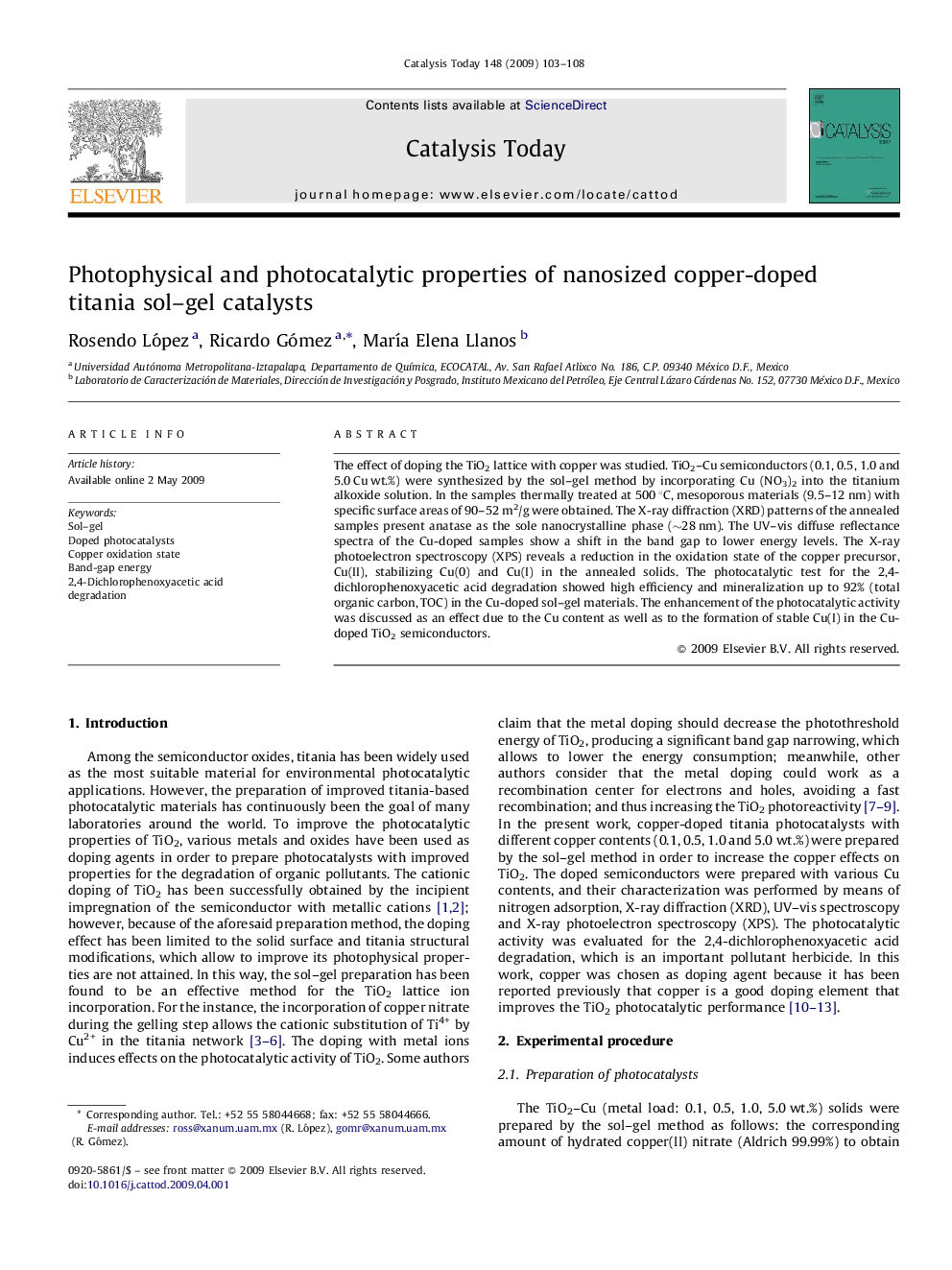| کد مقاله | کد نشریه | سال انتشار | مقاله انگلیسی | نسخه تمام متن |
|---|---|---|---|---|
| 57044 | 47105 | 2009 | 6 صفحه PDF | دانلود رایگان |

The effect of doping the TiO2 lattice with copper was studied. TiO2–Cu semiconductors (0.1, 0.5, 1.0 and 5.0 Cu wt.%) were synthesized by the sol–gel method by incorporating Cu (NO3)2 into the titanium alkoxide solution. In the samples thermally treated at 500 °C, mesoporous materials (9.5–12 nm) with specific surface areas of 90–52 m2/g were obtained. The X-ray diffraction (XRD) patterns of the annealed samples present anatase as the sole nanocrystalline phase (∼28 nm). The UV–vis diffuse reflectance spectra of the Cu-doped samples show a shift in the band gap to lower energy levels. The X-ray photoelectron spectroscopy (XPS) reveals a reduction in the oxidation state of the copper precursor, Cu(II), stabilizing Cu(0) and Cu(I) in the annealed solids. The photocatalytic test for the 2,4-dichlorophenoxyacetic acid degradation showed high efficiency and mineralization up to 92% (total organic carbon, TOC) in the Cu-doped sol–gel materials. The enhancement of the photocatalytic activity was discussed as an effect due to the Cu content as well as to the formation of stable Cu(I) in the Cu-doped TiO2 semiconductors.
Journal: Catalysis Today - Volume 148, Issues 1–2, 30 October 2009, Pages 103–108